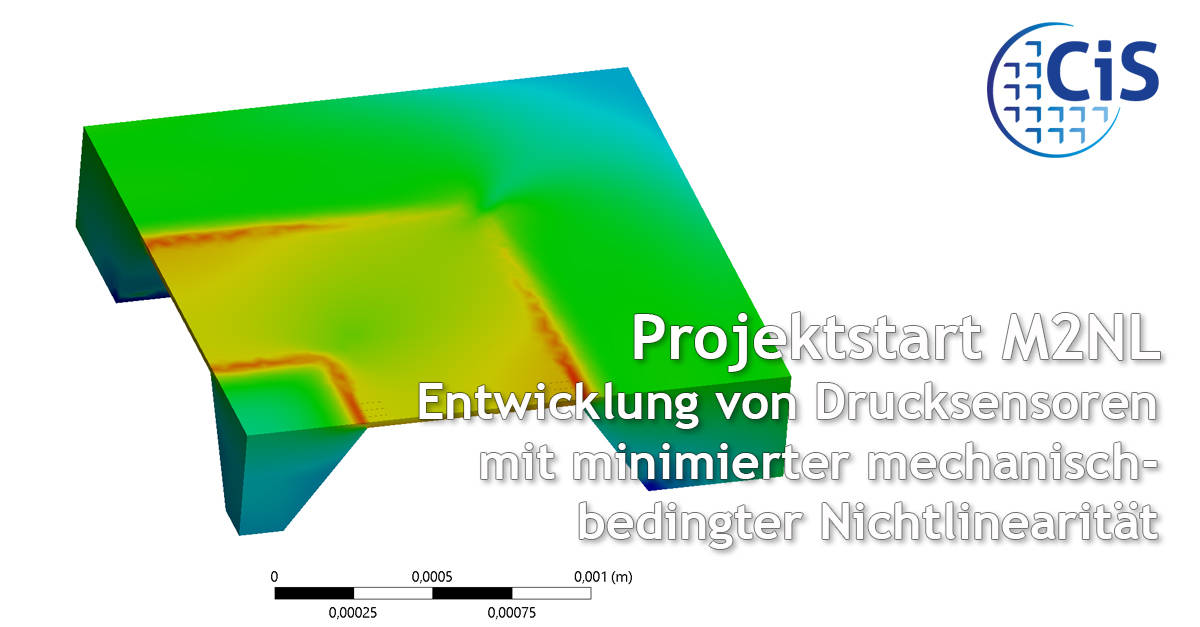MEMS pressure sensors are tiny, versatile and inexpensive to produce. They convert the physical measured value of pressure into an electrical signal. At the heart of the pressure sensor is a membrane that reacts to changes in pressure. The mechanical behavior of the diaphragm can be described as a model using a bending plate from technical mechanics.
Important parameters for characterizing pressure sensors are the pressure sensitivity and the non-linearity of the characteristic curve. The sensitivity increases with a greater diaphragm edge length and decreases with a greater diaphragm thickness. The ratio of diaphragm edge length to diaphragm thickness is therefore relevant for the geometric design of pressure sensors. The sensitivity increases with a larger ratio. However, the non-linearity also increases, so that there is a conflict of objectives between sensitivity and non-linearity
In the newly launched M2NL project, a development team at the CiS Research Institute is analyzing measurement data from various piezoresistive pressure sensors and wants to use the analysis results to calculate mechanical parameters and their temperature dependency. Non-linear effects are to be taken into account and their influence analyzed in the simulation using the FEM tool ANSYS Multiphysics.
 The research and development work described was funded by the Federal Ministry of Economic Affairs and Climate Action (BMWK) in the research project “Development of pressure sensors with minimized mechanically induced non-linearity” (M2NL).
The research and development work described was funded by the Federal Ministry of Economic Affairs and Climate Action (BMWK) in the research project “Development of pressure sensors with minimized mechanically induced non-linearity” (M2NL).
FKZ: 49MF230020




